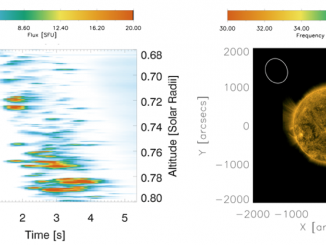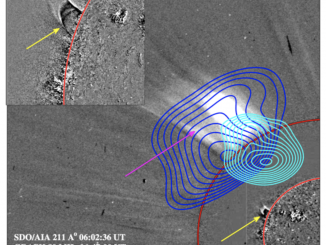Langmuir wave motion observed in the most intense radio sources in the sky
by H. Reid and E. Kontar
The Sun routinely produces energetic electrons in its outer atmosphere that subsequently travel through interplanetary space. These electron beams generate Langmuir waves in the background plasma, producing type III radio bursts that are the brightest radio sources in the sky (Suzuki & Dulk, 1985). These solar radio bursts also provide a unique opportunity to understand particle acceleration and transport which is important for our prediction of extreme space weather events […]



